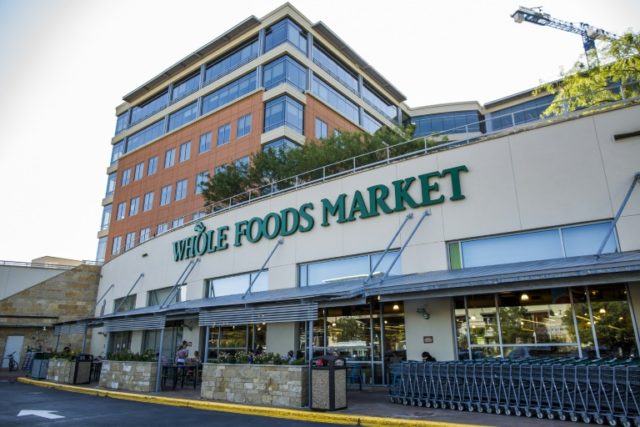Whole Foods Market slashed prices by an average of about 40 percent as its new owner, Amazon, declared an industry price war.
Bloomberg News reported that the Whole Foods Market on the upper East Side of Manhattan nearest to its headquarters had slashed prices by between 33 and 48 percent to shake up the industry. The price cuts included organic produce, animal-welfare rated meats, and Everyday Value staples.
Between mid-2015 and early 2017, Barclay’s retail analyst Karen Short estimated that Whole Foods lost about 14 million customers. She called the traffic losses “staggering.” The main culprit was Kroger, America’s second largest supermarket chain, which began stocking a competitive selection of organic products priced at 15 percent average discounts to Whole Foods.
Short commented that organic sales at Kroger’s 2,778 stores hit $16 billion last year, slightly higher than the $15.8 billion in total sales that Whole Foods’ 470 stores generated last year. She warned that once traffic has been lost, the pattern rarely can be reversed.
Whole Foods tried to launch a discount chain subsidiary named “365 by Whole Foods” that was designed to be about 60 percent smaller in size, and supposedly would feature more in-house prepared foods that millennials supposedly seek. But the concept won little customer traction, and led to the sale of the chain to Amazon.
Kroger’s stock doubled from 2014 to 2016, while Whole Foods’ stock lost almost two-thirds of its value. But since rumors of the Amazon buyout first surfaced in early 2017, Kroger’s stock price has been cut in half.
Amazon has had its toe in the grocery business for several years. Prime members can buy non-perishables from Prime Pantry. In more than a dozen U.S. metropolitan regions, AmazonFresh is available to Prime members that are willing to pay a $14.99 monthly delivery fee to buy perishables. Amazon launched its Amazon Go brick-and-mortar grocery market in Seattle, which uses sensors that automatically charge customers’ Prime accounts automatically, rather using human check-out cashiers.
Americans spend about 10 percent of their incomes on food, but grocery store margins average just 1 to 3 percent. Data from Slice Intelligence reveals that U.S. online grocery sales grew by 44.6 percent in 2016, but are still less than 1 percent of total food sales. Amazon holds an 18 percent online grocery market share, with AmazonFresh holding a 9 percent share of grocery delivery, according to analysis of 4.7 million email receipts.
Most analysts believe Amazon’s acquisition of Whole Foods Market is a predatory move to use Amazon’s scale-based efficiencies and consumer habits to expand retail domination. But Seeking Alpha’s Jane Edmondson suggests that Amazon had to buy Whole Foods in response to the purchase by Wal-Mart Stores, Inc. (WMT), number two in online grocery sales, of disruptive online retailer Jet.com last year.
Amazon’s $135 billion in 2016 sales allowed the company to achieve economies of scale to capture almost 50 percent of online retailing sales. But Wal-Mart’s $499 billion in sales last year gives the company almost four times those economies of scale.
To respond to Amazon’s Whole Foods price war, fast growing Sprouts was reported to have cut its prices by 10 percent, and major supermarket chains are gearing up for a barrage of mailers and coupons featuring hugely discounted items.

COMMENTS
Please let us know if you're having issues with commenting.